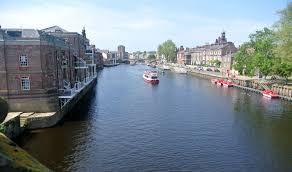The River Ouse: A Lifeline for Communities and Ecology

Introduction
The River Ouse is one of the key waterways in East England, flowing through important towns and cities. This river plays a significant role in local ecology, economy, and recreation. Understanding the importance of the River Ouse is vital for residents and visitors, as it embodies both historical significance and natural beauty.
Geography and Course
The River Ouse originates in the Yorkshire Dales and travels a distance of around 130 miles before it joins the North Sea at the town of Willoughby. Along its journey, the river passes through picturesque landscapes, including hills, valleys, and various urban environments like York, where the river is a focal point of the community. It flows through several counties, including Yorkshire and East Riding.
Historical Significance
Historically, the River Ouse has been essential for transport and trade. In medieval times, it served as a vital shipping route for goods moving in and out of York. The river facilitated the growth of settlements and contributed to the region’s economy. This legacy continues today as the river supports leisure boating and tourism, enhancing local businesses.
Ecological Importance
The River Ouse supports a diverse range of wildlife and natural habitats. It is home to various fish species, including salmon and eel, and provides habitat for birds, otters, and other fauna. Conservation efforts are ongoing to preserve the river’s natural environment, ensuring that it remains a thriving ecosystem. Recent initiatives have aimed to improve water quality and promote biodiversity in the region.
Recent Developments
In recent years, the River Ouse has been a focal point for community engagement efforts. Local councils have introduced several initiatives to enhance riverside areas, promote outdoor activities, and encourage sustainable practices. The annual Ouse Festival celebrates the river’s cultural significance with activities that include guided walks, educational workshops, and family-friendly events.
Conclusion
The River Ouse continues to be a lifeline for both the local communities and the environment. It has evolved from a historical trade route to a crucial natural asset. As communities rally to protect and celebrate this waterway, its importance will only grow. For residents and visitors alike, understanding and appreciating the River Ouse will ensure its legacy for generations to come, making it a river of both history and hope.
